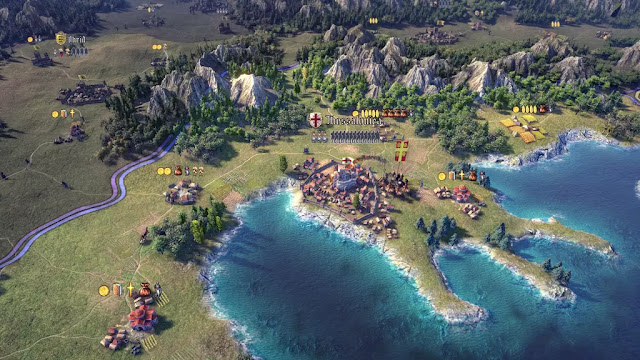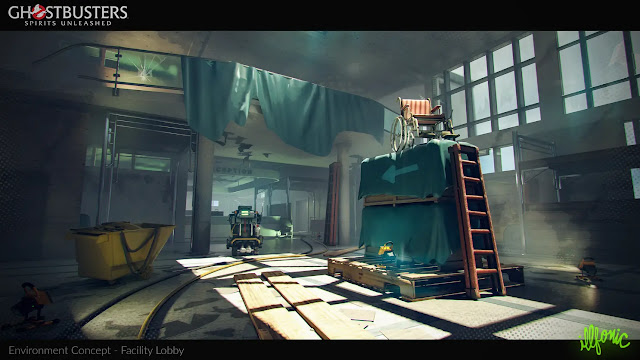Broken Lines by developer PortaPlay and publisher SuperGG.com—Sony PlayStation 5 review written by Pierre-Yves with a copy provided by the publisher.
Taken from Broken Lines’ website as it says it best, "Broken Lines is a story-driven tactical RPG about a small and disorganized squad who are stranded behind enemy lines during WWII." Put in charge of this squad of eight, your decisions will affect everything. From the interpersonal relationships to whether your members live or die on the battlefield, their lives are in your hands.
Broken Lines is one of those titles that feels entirely familiar while bringing about a rather unique experience. Blending both real time and turn-based strategy… both? Both. This helps get settled in quickly for fans of either while still keeping some surprises in store over the course of the adventure.
While I'll get more to the camp interface shortly, once your squad is ready to go, they are deployed onto a mission map with a primary objective point. Is that objective the entire mission? Or will reaching that point trigger a checkpoint for something else? Only by diving in and finding out will you really know.
To get to these goals, things will start in a turn-based affair. Each unit can be selected independently from one another and you start to queue up actions on each member's timeline. Under each action you'll see the amount of seconds that are required which is going to be very important once you trigger everything to start moving in real time.
Not unlike Dungeons & Dragons where each turn is six seconds, in Broken Lines a turn is eight. During this real time segment, the only thing you can do is watch. Whether you've asked your units to move carefully, normally, sprint or specifically use an ability, such as suppressing fire, throwing a grenade, using a health pack or using bandages, you can only watch until the turn is over. Once the turn is over, you can allow them to continue your previous set of actions or do it all over again.
The cases in which you might want to modify your orders are if enemies show up as your troops move forward which will bring that original eight seconds to a halt. This is good as it allows you to actually modify your actions instead of potentially walking into an ambush. While it was a little odd at first, late game this can easily save your squad from certain annihilation.
One of the more interesting aspects in Broken Line's turn-based into real time strategy is that you don't need to worry about telling your units to take aim and fire. Instead, the second that an enemy is within weapon range, your units will automatically open fire as long as they are in a position to. This helps blend into your strategy as you can easily move in and storm a position if you're currently at a disadvantage. The opposite could also happen in which it backfires and your units are dropped to the ground.
Here is the tricky part. If your units go down you do have an opportunity to pick them back up, but, if they go down a second time they are dead. Broken Lines deals with permadeath and with a squad of eight. You can go from being in a fighting shape to a rough shape rather quickly. So if a squad member does go down but you do get them back up they are going to have to deal with an injury which is where camp management is going to be important.
The camp interface is actually pretty simple. You have your squad of eight lined up from left to right, and from there you can listen to what each member has to say, if there's anything to say, and adjust their equipment and special abilities or perks. While you're in here though, you're going to want to pay close attention to two things. The first? Are there any injuries? If yes? You don't want to be deploying them on the next mission as any injuries will be an automatic death sentence if they fall in combat as there is no chance to pick them back up.
The second thing you're going to want to pay attention to is each unit's composure and how it relates to the squad's overall composure. The higher the composure the better the performance in battle. The lower the composure, the more easily they can get stressed and then potentially try to run away in the middle of combat, throwing them right into enemy fire. Clearly not something that you want to happen. The lining here though, while not silver, is that if you bring a unit with lower composure into a mission and the mission ends up going well? It’ll only improve! The catch? You need to make sure to do your mission in one go.
Because of its more harsh approach with permadeath AND running off on nothing more than an autosave making all decisions “final”, Broken Lines does offer you chances to try again and get it right. At any point in time, you'll have the ability to restart a mission from the beginning, restart from a checkpoint, or even restart from the camp interface if your team composition and loadout just isn’t working. In any of these cases, composure will take a hit on every member involved so you have to weigh that against restarting because things haven't gone according to plan, or you need to restart because several members both fell and died in battle.
Finally, the camp interface allows for extra in-between moments that will affect your squads interpersonal relations and how well they bond together. In some of these cases, the moments are on autopilot meaning the outcome will be what it'll be. In others, the outcome comes down to your choice of whose point of view you want to support. Do you try diplomacy? Do you do the rational thing? Or do you say to hell with it and go with the wild idea? In any of these cases there will be some form of consequence, or potentially a reward, and the result will affect you if your squad members get along better or hate each other affecting how they deal in the field beside one another.
All of these elements end up working rather well together. Starting from the camp interface with equipment loadouts of guns, medical supplies and extra firepower to actually deploying on the field, I think not being able to “backtrack” on your decisions made it work all the better. It’s a low key stress that settles in as you want everyone to make it out alive, but at the same time, it may not happen and you’ll have to live with that. Only sometimes this may happen.
So on a final note, I also appreciated that there are several save files that can be created to try carving out different paths without having to necessarily restart the save file that you are in. Some points in the story may only have one path forward but there is often a choice as to whether you want to go to point A, B, and sometimes even point C. Each of these has its own consequences and, as there’s no going back, you’ll get to see the result of these choices as the adventure comes to a close. Assuming you made it that far.
Summary
So overall, I really enjoyed my time with PortaPlay and SuperGG.com’s Broken Lines. The gameplay has a good balance of strategy while your squad is in the field over how you manage the issues back in camp. With a good deal of replayability between the different paths and endings, Broken Lines can easily keep both lovers of turn-based and real time strategy busy for a while!
Score: 8 / 10
































































